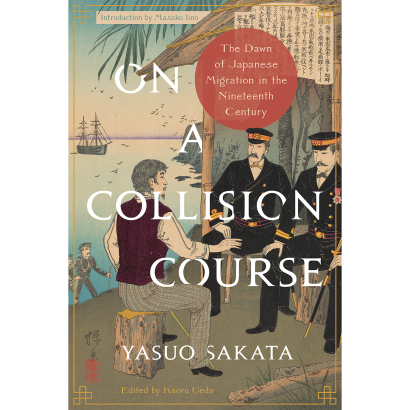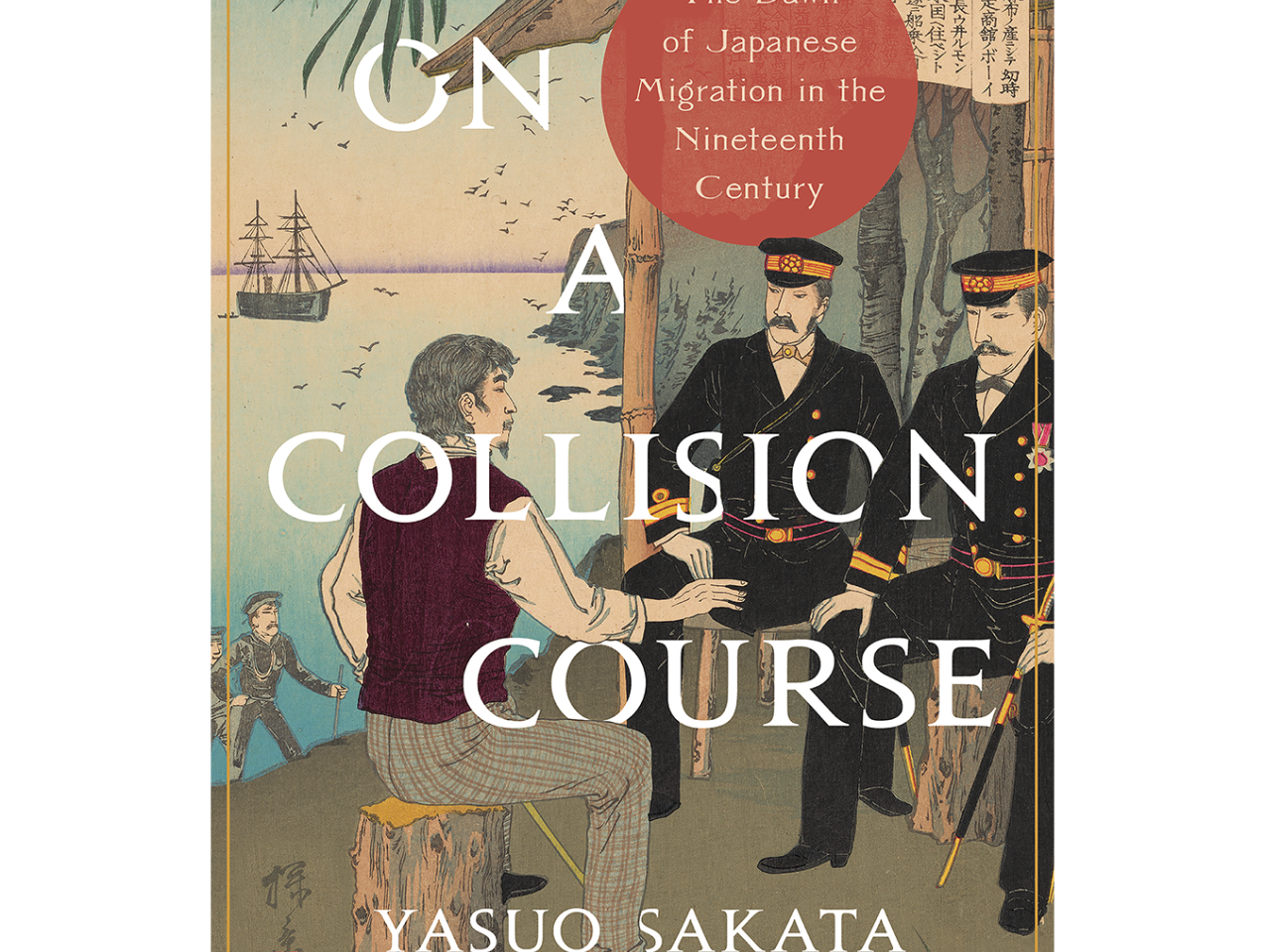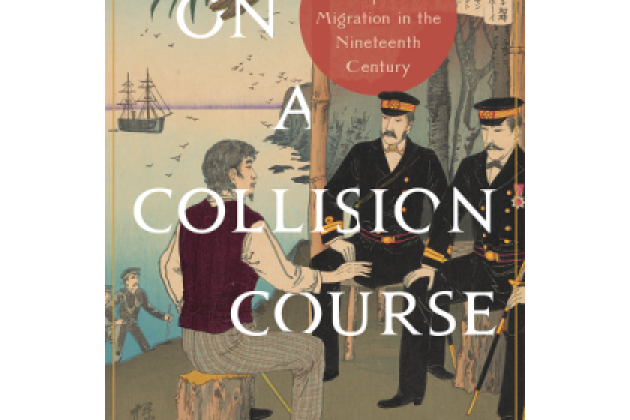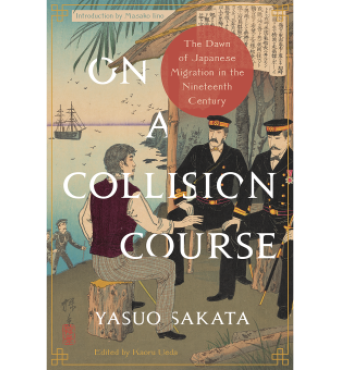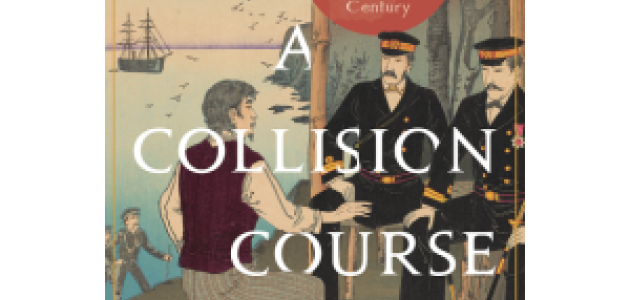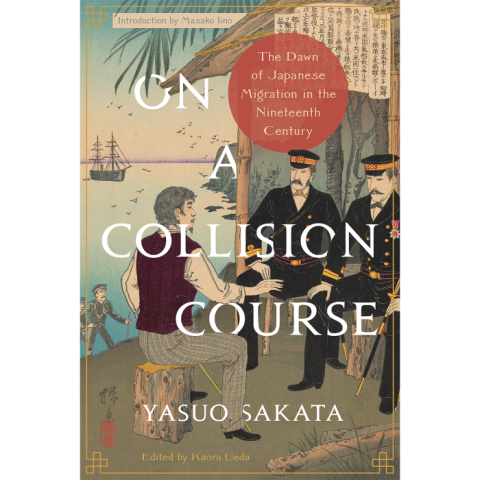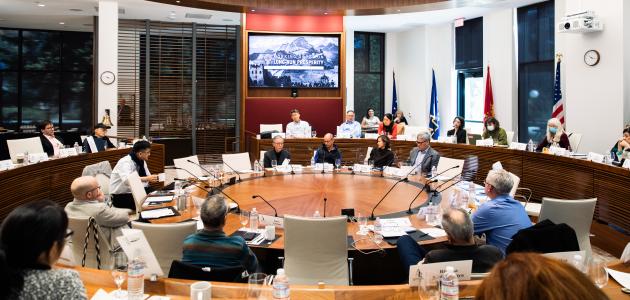
Hoover Institution (Stanford, CA) – The Hoover Institution will publish On a Collision Course, a collection of five meticulously researched essays written by Yasuo Sakata about Japanese immigration to the United States from a holistic, international, and deeply historical perspective.
Sakata, a leading scholar on migration studies in Japan and the United States, illuminates the persistent difficulties encountered by Japanese arriving in America, including mass-media and legal perspectives. Sakata’s essays also have the rare characteristic of being informed by thorough translations and analyses of Japanese-language sources as well as those in English. On a Collision Course is edited by Kaoru Ueda, the curator of the Japanese diaspora collection at the Hoover Institution Library & Archives.
“Sakata’s experience in reading primary source documents and interviewing first-generation Japanese American immigrants taught him many lessons in studying Japanese American history,” Ueda explained. “His research raises important questions about established historical understandings and increases awareness among English-speaking scholars of Japanese migration studies.”
In the first essay, Sakata provides an overview of primary sources he used in his writing, including diplomatic documents, immigration records, and news articles from both sides of the Pacific. He warns of gaps and biases in the historical record due to much documentation having been lost or intentionally destroyed, in part during the 1906 San Francisco earthquake and fires, and as a result of the internment of Japanese Americans during World War II. He also maintains that many of the remaining texts reflect culturally based inaccuracies.
“Even after World War II, Japanese Americans worried about being associated with the Japanese government. So, the first-generation Japanese Americans remained silent about their history,” Ueda said.
In the other essays, Sakata offers thorough examinations of Japanese migration, including how the opening of Japan in the Meiji era spurred overseas expansion and migration of its people to the United States. In his writing, Sakata incorporates an understanding of immigration, labor, working conditions, diplomatic relationships, and the effects of war and mass media.
He emphasizes the distinctions between the dekasegi period, when Japanese crossed the Pacific for work with the intention of returning home, the transition period, and the imin period, when they became permanent residents.
Sakata also discusses how the Japanese pro-Western self-image was lost on Americans, who tended to lump all Asian groups together, both in treatment and under the law.
On a Collision Course: The Dawn of Japanese Migration in the Nineteenth Century is available in hard cover and e-book formats. Click here to purchase.
About the Author
Yasuo Sakata, a leading scholar of Japanese migration studies in both Japan and the United States, taught at Osaka Gakuin University and served as president of the Japanese Association for Migration Studies. Sakata received a BA in history (1962) and a PhD in East Asian history (1969) from the University of California–Los Angeles. He was instrumental in compiling materials for UCLA’s Japanese American Research Project and published A Buried Past: An Annotated Bibliography of the Japanese American Research Project Collection (1974), compiled with Yuji Ichioka, Nobuya Tsuchida, and Eri Yasuhara; and Fading Footsteps of the Issei: An Annotated Check List of the Manuscript Holdings of the Japanese American Research Project Collection (1992).
About the Editor
Kaoru Ueda is the curator of the Japanese Diaspora Collection at the Hoover Institution Library & Archives, where she manages the Japanese Diaspora Initiative and the Hoji Shinbun Digital Collection.
Acclaim for On a Collision Course
“Professor Sakata’s broad and deep knowledge of both English and Japanese language sources informs these original and important essays on early Japanese migration that will be of interest to a wide range of scholars.”
—David K. Yoo, vice provost and professor, UCLA
“At last, On a Collision Course provides English-speaking readers with invaluable access to the scholarship of Yasuo Sakata, arguably one of the foremost trailblazers in Japanese American studies. Superbly translated, the volume highlights the contemporary relevance of Sakata’s works published in Japan over a quarter of a century ago. While based on impeccable empirical research, the selected essays offer an in-depth look at how the early Japanese immigrant experience unfolded in the intertwined contexts of US-Japan diplomacy and the local race politics of the American West. Still with ample power to inspire, Sakata’s studies represent migration history writing at its best and are a must-read for anyone interested in transpacific working-class migration and Japanese American history.”
—Eiichiro Azuma, associate professor of history and Asian American studies, University of Pennsylvania
“Yasuo Sakata in On a Collision Course lays out the challenges of researching the Japanese American history: the massive loss of historical archives during the 1906 San Francisco Great Fire and the 1942–45 internment; and the commonplace practice of secondhand citations and historical distortions in the Nikkei communities’ publications in early decades. How could one overcome these problems, if at all? This is a must-read text for those who seek an answer to this question.”
—Yuma Totani, professor of history, University of Hawaii, and author of The Tokyo War Crimes Trial
“This is an exceptionally erudite and timely publication of Yasuo Sakata’s historical studies of migration between Japan and the United States during the Meiji era. Sakata’s research amounts to essential reading on the place of Issei labor and patterns of mobility caught between the expansionist and exclusionist policies of two rising world powers. Appearing for the first time in English translation, with a preface by Kaoru Ueda and critical introduction by Masako Iino, it provides nuanced, multilayered analyses of the archives on both sides of the Pacific instrumental for restoring this vital transnational history.”
—Seth Jacobowitz, assistant professor of East Asian languages and literatures, Yale University, and author of Writing Technology in Meiji Japan
“Yasuo Sakata was a pioneer, approaching early Japanese American studies as a field deserving of scholarly attention from both sides of the Pacific. His insistence on the need for bilingual facility and reliance on trustworthy historical documents and archives was only rarely possible, but it will continue to be a beacon and vision for aspiring scholars in the field. This translated volume is most welcome; it is a major contribution.”
—Franklin Odo, John J. McCloy Visiting Professor of American Institutions and International Diplomacy, Amherst College
“Revisiting pioneers’ works always results in ‘new’ findings, perspectives, and surprises. This translated collection of essays written by a pioneer scholar of Japanese American history, Yasuo Sakata, shows us the significance of how historians decipher primary sources, master the languages of research, and pay attention to both micro- and macroperspectives. Scholars who are interested in the US-Japan history, immigration history, and Japanese American studies will benefit from reading his valuable essays for better understanding the development of historical researches on Japanese immigrants and their descendants in the United States.”
—Mariko Iijima, associate professor, Sophia University
For coverage opportunities, contact Jeffrey Marschner, 202-760-3187, jmarsch@stanford.edu.








